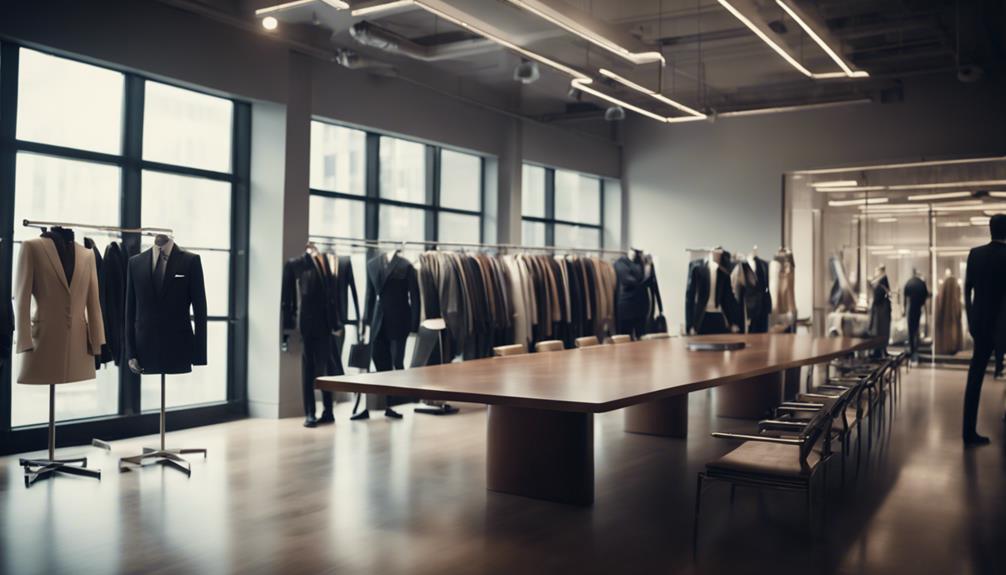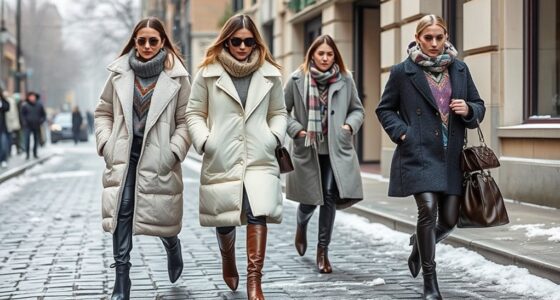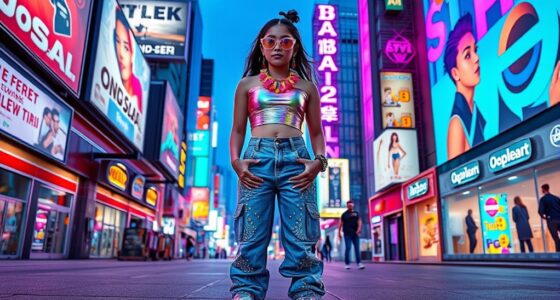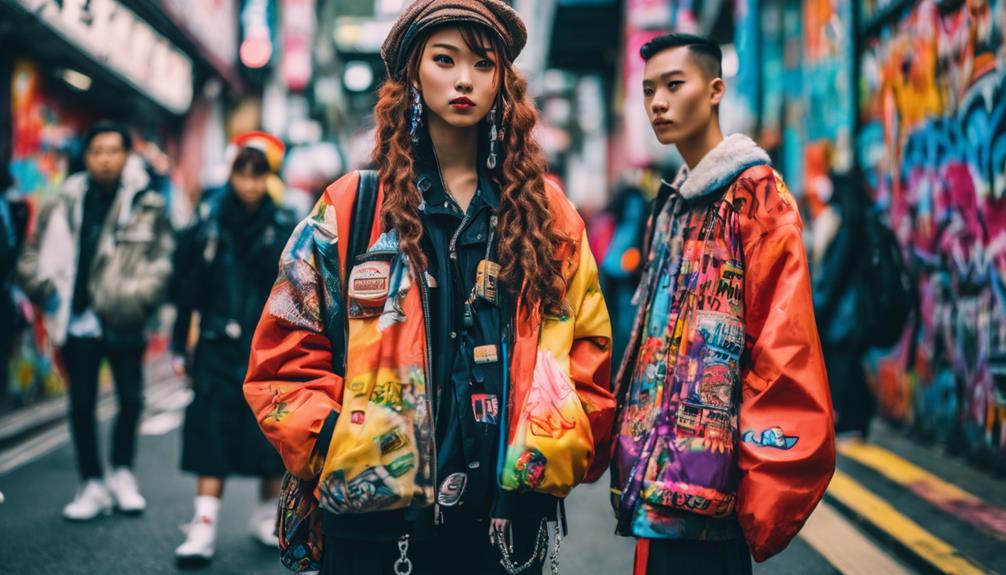In the rapidly evolving world of fashion, it is essential to keep abreast of trends, consumer behavior, and sustainability. Each period influences unique styles that mirror cultural changes, while certain characteristics such as iconic shapes help define brand identities. With sustainability becoming a top priority for consumers, up-and-coming labels are focusing on eco-friendly materials and ethical practices. Social media also plays a crucial role in fostering engagement and loyalty by fostering genuine connections. Understanding seasonal color palettes and styling techniques can enhance your product offerings. Arm yourself with knowledge that will allow you to successfully navigate these changes, paving the way for deeper insights and strategies to excel in this dynamic industry.
Key Takeaways
- Fashion trends are shaped by cultural shifts, with each decade introducing distinct styles and icons that influence contemporary fashion.
- The rise of sustainable fashion reflects consumer demand for eco-friendly materials and ethical practices, driving growth in the market.
- Social media, especially platforms like TikTok, plays a crucial role in shaping brand connections and influencing consumer behavior among younger generations.
- Timeless fashion staples and durable materials ensure versatility and longevity, allowing brands to maintain relevance in an ever-changing market.
Origin and historical background of the fashion trend/style
To understand fashion's evolution, you need to take into account how trends reflect cultural shifts and movements.
Each decade brought its own icons and styles, shaping the way we express ourselves today.
Fashion's Shift Through Decades
Fashion's evolution across the decades showcases a dynamic interplay between cultural shifts and societal values, shaping styles that reflect the times.
In the early 20th century, the 1920s marked a notable turn towards modernity, introducing ready-to-wear clothing that made fashion accessible to everyone.
Fast forward to the 1960s, and you see a cultural revolution where youth-driven styles emerged, influenced by music icons like The Beatles, creating trends focused on individual expression.
The 1980s introduced power dressing, with bold silhouettes and vibrant colors reflecting corporate culture and the feminist movement, transforming women's fashion considerably.
As you move into the 1990s, minimalism and grunge aesthetics took center stage, showcasing a societal shift towards authenticity and anti-consumerism, with brands like Calvin Klein and Marc Jacobs redefining luxury through simplicity.
Cultural Icons and Movements
Cultural icons have always shaped fashion trends, bringing unique styles and movements to the forefront of society. From Coco Chanel's little black dress to Yves Saint Laurent's ready-to-wear collections, these figures revolutionized women's clothing in the early to mid-20th century. The punk movement of the 1970s, driven by icons like Vivienne Westwood, introduced bold fashion choices that challenged societal norms and inspired future generations.
As hip-hop culture emerged in the 1980s and 1990s, figures like Run-D.M.C. and Kanye West transformed streetwear into a global phenomenon, blending music, art, and style. Meanwhile, the grunge aesthetic of the early 1990s, popularized by Nirvana and Marc Jacobs, reflected a disillusioned youth's ethos through relaxed styles like flannel shirts and distressed jeans.
Today, social media influence plays a significant role in shaping fashion movements. New trendsetters, such as influencers and digital creators, now impact consumer behavior on a global scale, making it easier for unique styles to gain traction.
Key Characteristics
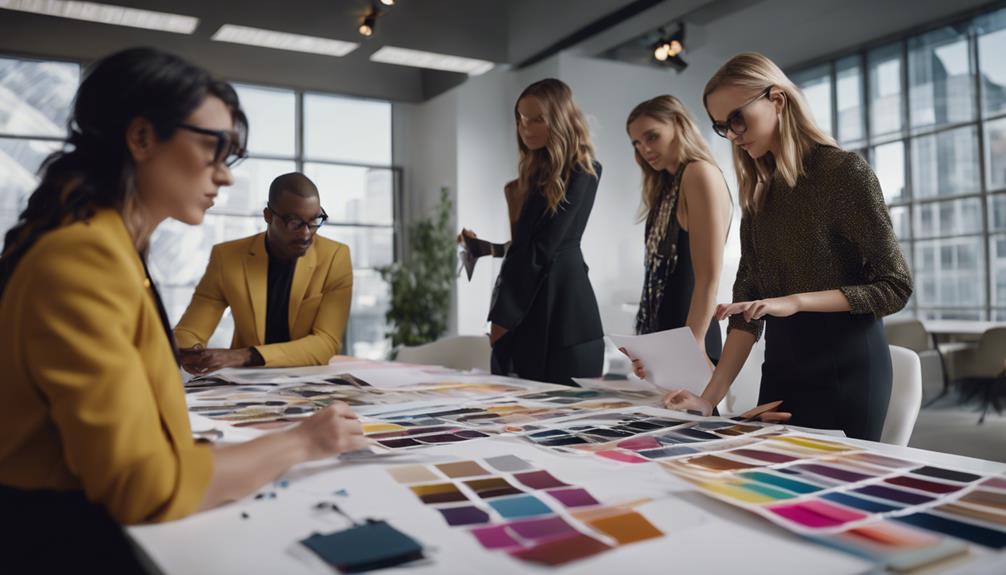
When exploring key characteristics in fashion, you'll notice signature silhouettes and cuts that define a brand's identity.
Sustainable fabrics and hues are becoming essential as consumers prioritize eco-friendly choices.
Plus, timeless fashion staples guarantee your wardrobe remains relevant and versatile across seasons.
Signature Silhouettes and Cuts
Signature silhouettes and cuts play an essential role in shaping a brand's identity, often highlighting unique characteristics that resonate with consumers.
For instance, Dior's 'New Look' revolutionized women's fashion with its cinched waist and full skirt, establishing a timeless signature silhouette. Tailored lines are vital in enhancing body shape, as seen in Giorgio Armani's designs that blend relaxation with structure, epitomizing Italian luxury.
Versace takes a bold approach with body-conscious silhouettes that showcase vibrant prints and daring cuts, reflecting both their provocative aesthetic and cultural relevance. Innovative draping techniques, like those employed by Issey Miyake, challenge conventional forms and create distinctive looks that stand out in the fashion landscape.
These signature silhouettes aren't just about aesthetics; they're reinforced through consistent brand messaging that forges an emotional connection with consumers.
Chanel's classic tweed jacket exemplifies how a well-crafted silhouette can evoke nostalgia and elegance, strengthening brand identity over decades.
Sustainable Fabrics and Hues
As fashion evolves, the focus on sustainable fabrics and hues is becoming a defining characteristic that reflects a brand's commitment to environmental responsibility.
You'll notice that sustainable fabrics, like organic cotton, hemp, and Tencel, are gaining traction due to their minimal environmental impact. These materials use less water and avoid harmful chemicals, making them eco-friendly choices.
Recycled materials, such as reclaimed polyester from plastic waste, are also trending. They help reduce landfill contributions and conserve resources, aligning with the principles of circular fashion. Brands are increasingly adopting circular fashion practices by selecting fabrics that are easily recyclable or biodegradable, which extends the lifecycle of garments.
Moreover, natural dyes derived from plants, minerals, and insects are becoming popular for creating vibrant hues without the toxic byproducts associated with synthetic dyes. This promotes a cleaner, eco-conscious approach to coloring.
Timeless Fashion Staples
Timeless fashion staples stand out for their versatility, allowing you to effortlessly style them for any occasion. These pieces, like the classic white shirt or little black dress, emphasize quality over quantity. Investing in durable materials guarantees they withstand changing trends and provide longevity in your wardrobe.
You'll find that timeless staples typically feature neutral colors or classic patterns, making them easy to integrate into diverse outfits. This adaptability keeps them relevant season after season, whether you're dressing up for a formal event or keeping it casual.
Iconic items such as tailored blazers and trench coats not only highlight practicality but also exude elegance, showcasing a blend of style that transcends trends.
The enduring appeal of timeless fashion staples is evident in their consistent presence on runways and in retail. Designers continue to reinterpret these classics, proving their ability to adapt while maintaining a core identity.
Modern Interpretation
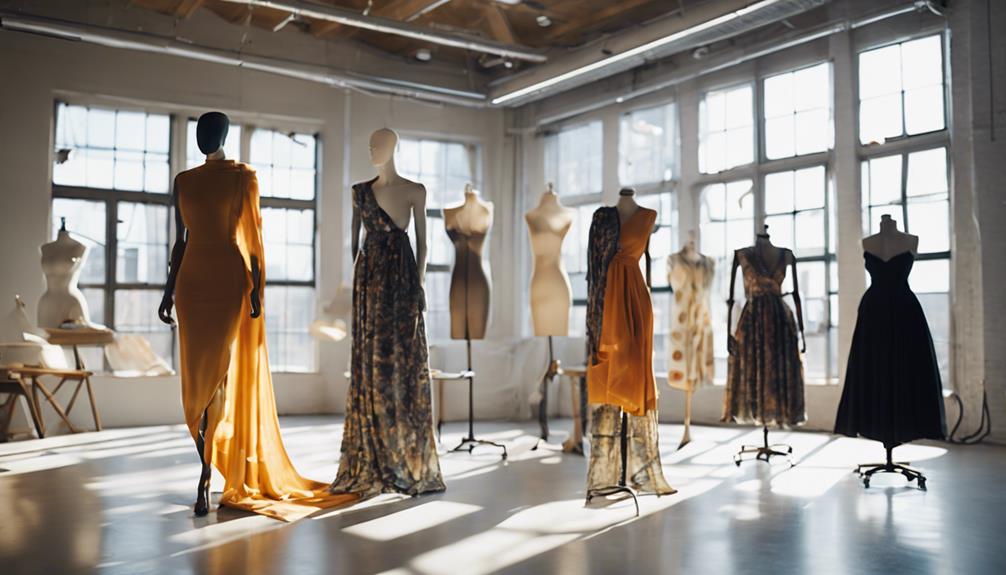
In today's fashion landscape, you can't ignore the rise of sustainable innovations and emerging labels that prioritize eco-friendliness.
Social media influencers are also reshaping perceptions, showcasing how style can align with sustainability.
As you explore these trends, consider how they reflect a modern interpretation of fashion that resonates with today's conscious consumers.
Sustainable Fashion Innovations
Sustainable fashion innovations are reshaping the industry, driven by consumer demand for eco-friendly practices and transparency. As you engage with brands, you'll notice a significant shift towards sustainable practices, with many adopting circular economy principles. This approach not only integrates sustainable materials into collections but also enhances transparency in supply chains.
You might be interested to learn that the European Commission plans to implement digital product passports by 2026. These passports will improve product traceability, allowing you to make informed choices while boosting trust in the brands you support. Collaborations between fashion brands and environmental organizations are increasingly common, showcasing a united front against sustainability challenges.
Millennials and Gen-Z consumers are at the forefront of this movement, driving demand for sustainable luxury products. With a projected 10% annual growth in the luxury goods market through 2025, it's clear that brands are prioritizing ethical practices to resonate with these conscious shoppers. By embracing sustainable fashion innovations, you're not just making a style statement; you're contributing to a more sustainable future in fashion.
Emerging Sustainable Fashion Labels
Emerging sustainable fashion labels are responding to the demand for eco-friendly options by prioritizing innovative materials and ethical practices that resonate with conscious consumers. These brands are increasingly using eco-friendly materials like organic cotton, recycled polyester, and even mushroom leather to minimize their environmental impact.
You'll notice that Millennials and Gen Z are leading this charge, with around 70% of young consumers preferring brands committed to sustainability.
Many of these labels adopt circular economy principles, offering repair services and recycling programs that align with your values of reducing waste and promoting longevity in fashion. To stand out in a crowded market, they're also obtaining sustainability certifications such as B Corp and the Global Organic Textile Standard (GOTS). These credentials help build credibility and trust.
As the market for sustainable fashion is projected to grow over 9% annually, it's clear that ethical consumption is no longer just a trend but a fundamental shift in how you perceive and engage with fashion.
Fashion-Forward Social Media Influencers
Fashion-forward social media influencers are reshaping how you connect with brands by blending creativity and authenticity in their content. These influencers leverage social media platforms, particularly TikTok, to craft engaging narratives that resonate with Gen-Z audiences. As you navigate influencer marketing, you'll find that these partnerships enhance brand engagement, allowing you to reach targeted demographics effectively.
Understanding audience behavior is vital in today's landscape. Data-driven insights from social media analytics provide you with the information needed to adapt your marketing strategies. By monitoring preferences and trends, you can align your campaigns with what truly matters to your consumers.
Authenticity is key for Gen-Z shoppers, who prioritize relatable content over polished advertisements. Influencers who maintain transparency and align closely with brand values foster consumer loyalty and trust, which are essential for long-term success. When you collaborate with the right influencers, you not only amplify your messaging but also connect on a deeper level with your audience.
In this dynamic environment, embracing fashion-forward influencers can elevate your brand and allow you to thrive in the ever-evolving fashion industry.
Styling Tips

When it comes to styling, you can elevate your wardrobe with versatile layering pieces that work across seasons.
Consider incorporating seasonal color palettes and mastering pattern pairing techniques to create dynamic looks.
Let's explore how these tips can transform your outfits and enhance your personal style.
Versatile Layering Pieces
Layering pieces like lightweight turtlenecks and oversized blazers frequently elevate your wardrobe, offering endless combinations for any occasion. With the current consumer demand for versatile layering pieces, you can easily adapt to varying temperatures while maintaining style. This trend reflects a significant growth in sales, as brands report a 20% increase in these items.
To truly make the most of your layering, focus on personal expression. Experiment with combinations that resonate with your unique style, and don't shy away from incorporating accessories. Scarves, cardigans, and statement jewelry can transform simple outfits into accessorized outfits that draw attention.
When styling, pay attention to color coordination and texture. Neutral palettes are trending, allowing you to mix and match effortlessly while still looking cohesive.
Additionally, varying fabrics can add depth to your layers, reflecting the key trends highlighted by fashion influencers in 2023.
Seasonal Color Palette Suggestions
Explore the latest seasonal color palettes to elevate your style, focusing on warm tones like rust and mustard for a cozy autumn look. These colors not only resonate emotionally but also reflect contemporary consumer preferences as they evoke feelings of comfort and nostalgia.
To align with the growing demand for sustainability, consider incorporating muted colors such as sage green and dusty rose into your wardrobe. These shades are increasingly popular, symbolizing eco-conscious fashion choices that many consumers now prioritize.
If you're looking to make a bold statement, vibrant colors like electric blue and fuchsia will draw attention, especially from the Gen-Z market, who crave individuality and self-expression in their style. Understanding color psychology can help you choose hues that resonate emotionally with your audience, influencing their purchasing decisions.
Utilizing data-driven insights allows brands to adapt to shifting seasonal color trends, ensuring your choices remain relevant and appealing.
Pattern Pairing Techniques
Building on your seasonal color palette, mastering pattern pairing can elevate your style by creating visually striking outfits that showcase your personality. Start by mixing a bold pattern with a subtle pattern; this technique guarantees that the dominant print is balanced by a less demanding counterpart, resulting in cohesive looks.
When selecting your prints, keep your color palette in mind. Choose patterns that share a common color or hue to unify your ensemble. Additionally, pay attention to scale—pairing a large-scale print with a smaller one adds contrast and prevents your outfit from feeling overwhelming.
Textures also play an essential role in pattern pairing. Combining different textures can add depth to your outfit, making it more dynamic. Don't forget about accessories; incorporating solid-colored items or subtle patterns can ground your look, allowing your main prints to stand out without clashing.
Experimenting with these techniques will help you develop your unique style, making you feel confident and fashionable. Remember, the key to effective pattern pairing lies in balancing prints, colors, and textures for a visually appealing result.
Shopping Guide
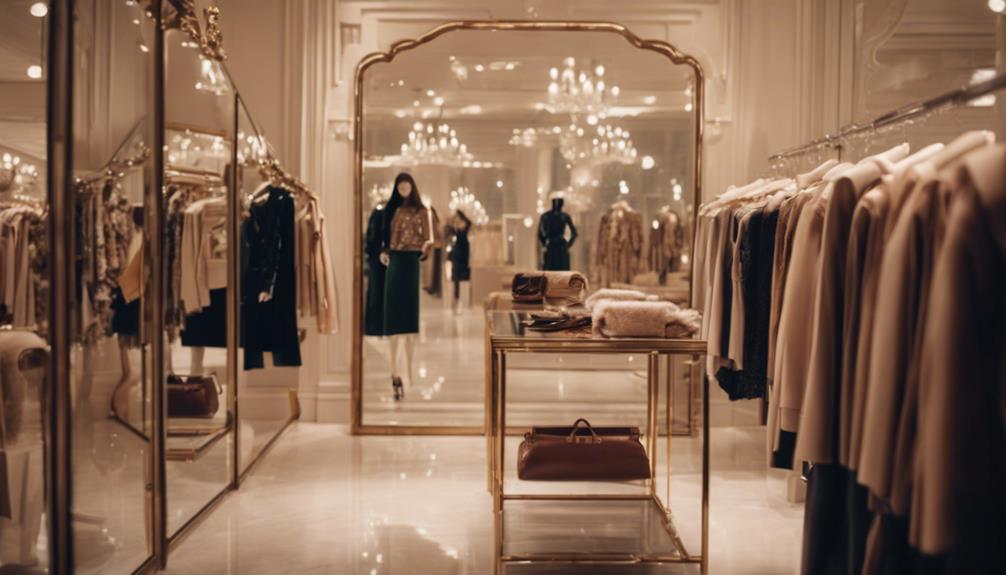
Maneuvering the evolving landscape of fashion shopping requires understanding trends like sustainability and the luxury resale market to make informed choices.
As you explore luxury goods, keep in mind that Millennials and Gen Z increasingly prioritize sustainable practices. This shift in consumer behavior has driven e-commerce sales to unprecedented heights, reaching $6.3 trillion in 2023.
When engaging in online shopping, focus on platforms that offer transparency and traceability, as digital product passports will soon enhance this experience. These passports not only improve product authenticity but also build brand loyalty and trust.
As the luxury resale market gains momentum, consider purchasing pre-owned items—this aligns with sustainability goals while offering luxury at a more accessible price point.
Be aware of high online return rates, which challenge fashion profitability. Look for retailers that implement strategies to minimize returns, enhancing your overall shopping experience.
Upcycling Vintage Fashion Finds
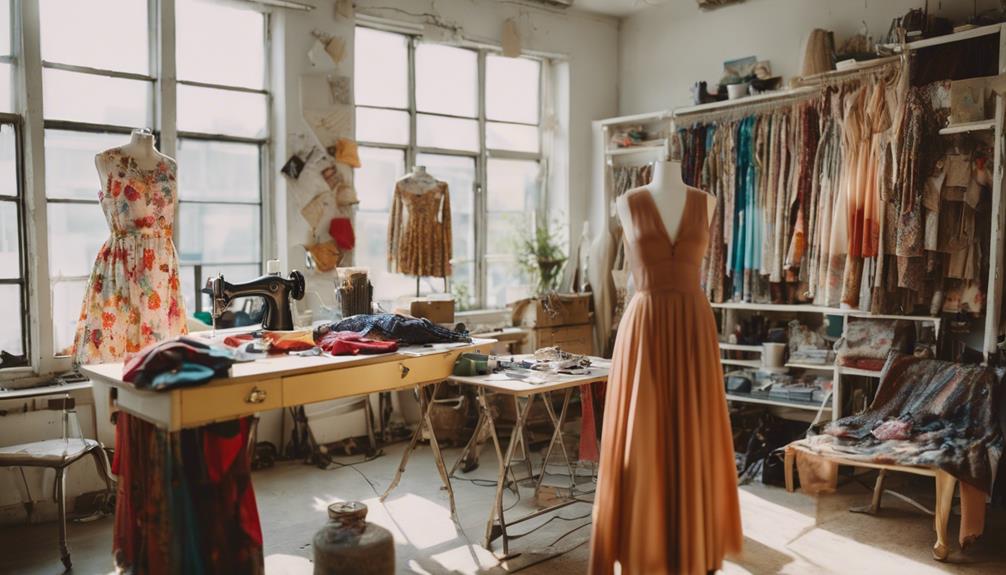
When you think about upcycling vintage fashion finds, consider the creative techniques that can transform old garments into stylish pieces.
You can add personalized embellishments to make each item truly your own, giving you a unique wardrobe that stands out.
Let's explore some innovative ideas to help you get started on your upcycling journey.
Upcycling Techniques for Fashion
Upcycling vintage fashion finds breathes new life into forgotten garments, turning them into unique pieces that reflect your personality and commitment to sustainability.
By embracing upcycling, you're not only reducing waste but also contributing to an eco-friendly fashion movement that resonates with Millennials and Gen Z. These consumers value authenticity and storytelling in their purchases, seeking out items that have a past and a purpose.
When you upcycle, you transform existing materials into something fresh and desirable, enhancing your connection with customers who appreciate creativity and sustainability.
This technique can also help brands minimize production costs, allowing them to rework vintage items without the expense of sourcing new materials.
Furthermore, upcycled fashion often commands higher price points, as shoppers are willing to invest in sustainable and one-of-a-kind pieces that tell a story.
Personalized Embellishment Ideas
Often, adding personalized embellishments to vintage fashion finds can transform them into standout pieces that truly reflect your unique style. Upcycling isn't just a trend; it's a sustainable practice that resonates with consumers increasingly enthusiastic to support sustainable brands. By applying creative techniques like embroidery, tie-dye, or fabric paints, you can breathe new life into vintage garments while expressing your individuality.
As the resale market for vintage clothing continues to grow, it's clear that unique pieces are in high demand. Personalized embellishments, such as hand-stitched patches or beading, allow you to create fashion statements that stand out from the crowd. This creative expression connects with the nostalgic fashion movement, appealing particularly to younger consumers who appreciate the stories behind each garment.
Don't underestimate the power of social media; it's an excellent platform to showcase your upcycled creations. By sharing your projects, you can inspire others to embrace sustainable fashion practices and join the upcycling movement.
Cultural Impact
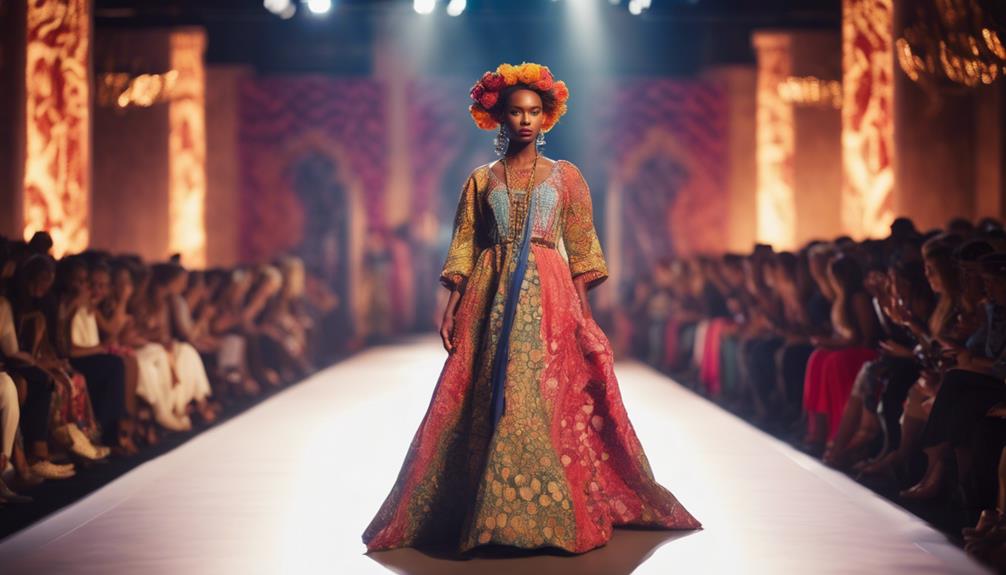
Fashion's influence in film and TV has shaped cultural narratives, making it essential for brands to recognize this impact.
You'll find that fashion often plays a key role in activism, reflecting and driving social change.
Understanding these dynamics can help you connect more effectively with your audience and align your brand with meaningful cultural movements.
Fashion in Film and TV
The interplay between fashion in film and TV not only shapes audience perceptions but also drives consumer trends and behaviors. When characters sport specific styles, it often leads to increased sales for fashion brands, as seen with the impact of 'Sex and the City.' The rise of streaming platforms has further amplified this effect; shows like 'Emily in Paris' highlight luxury brands, enhancing brand visibility and desirability among viewers.
Costume design serves as a powerful storytelling tool, with iconic outfits—like Audrey Hepburn's in 'Breakfast at Tiffany's'—becoming symbols of both character and brand, leaving a lasting mark on fashion history. Collaborations between fashion brands and film productions have gained traction, with designers crafting exclusive collections inspired by movies. A prime example is Gucci's partnership with its namesake film, which not only boosts brand prestige but also captures a wider audience's attention.
Moreover, the integration of fashion into competitions like 'Project Runway' educates viewers on the complexities of the fashion industry, influencing new generations of designers and consumers alike. As an industry leader, understanding these dynamics can help you leverage the cultural impact of fashion in visual media effectively.
Fashion's Role in Activism
Increasingly, brands are using their platforms to champion social causes, turning clothing into a canvas for activism and cultural change. Fashion isn't just about trends; it's a powerful vehicle for promoting sustainability and social responsibility. You see this shift in high-profile collaborations, like Gucci's partnership with Unicef, which raises awareness and funds for humanitarian causes while maintaining cultural relevance.
Consumer advocacy has driven brands to embrace ethical sourcing and transparency. Movements such as 'Fashion for Future' inspire designers to prioritize sustainable practices, demonstrating a commitment to reducing the fashion industry's carbon footprint. This isn't just a trend; it's a response to consumer demands for accountability and ethical conduct.
Social media plays an essential role in amplifying fashion activism. Campaigns like 'Who Made My Clothes?' highlight the need for greater transparency in the fashion supply chain, allowing grassroots initiatives to gain momentum. As a consumer, you have the power to influence brands by supporting those that align with your values.
This intersection of fashion and activism reflects a growing consciousness, proving that style can indeed be a tool for positive change.
Frequently Asked Questions
Is a Bof Membership Worth It?
If you're seeking in-depth insights and networking opportunities in the fashion industry, a membership can be worth it. You'll access valuable data, reports, and events that help you stay ahead of trends.
How to Get Bof for Free?
You can access BoF for free by reading their articles, subscribing to newsletters, attending free events or webinars, exploring educational resources, and following them on social media for real-time updates and insights.
How to Read Business of Fashion for Free?
You can read Business of Fashion for free by subscribing to their daily newsletter, following their social media accounts for updates, and accessing their selection of free articles and webinars on their website.
Who Is the CEO of Bof?
The CEO of BoF is Imran Amed. He founded the organization in 2013 and has since led its growth, becoming a key figure in fashion insights and analysis, influencing industry trends and strategies.
How Does Matches Fashion Contribute to the Business of Fashion Industry?
Matches Fashion has made a significant impact on the business of luxury designer fashion brands. By offering a curated selection of high-end designer pieces, they have elevated the visibility and accessibility of these brands to a global audience. With their strategic marketing and distribution, Matches Fashion has played a key role in shaping the modern fashion industry.
Conclusion
To sum up, understanding the evolution of fashion trends not only enriches your style but also empowers you to make informed choices.
By embracing key characteristics and modern interpretations, you can elevate your wardrobe.
Don't forget to explore upcycled vintage finds for a unique touch!
With these insights in hand, you're ready to express your individuality while appreciating the cultural impact of fashion.
Immerse yourself in your next shopping adventure with confidence and creativity!
